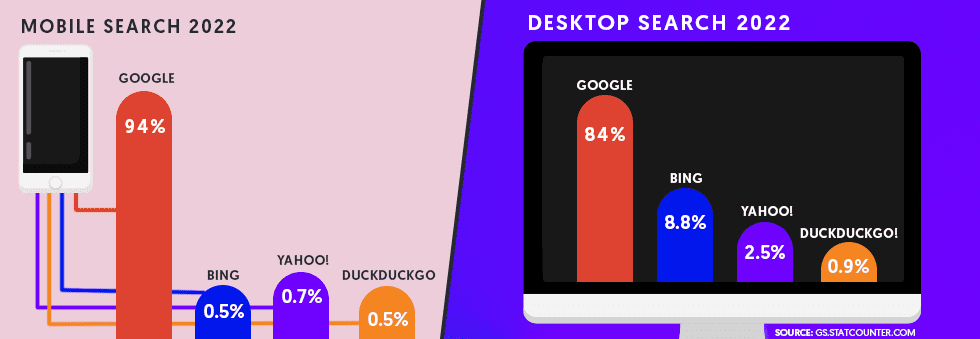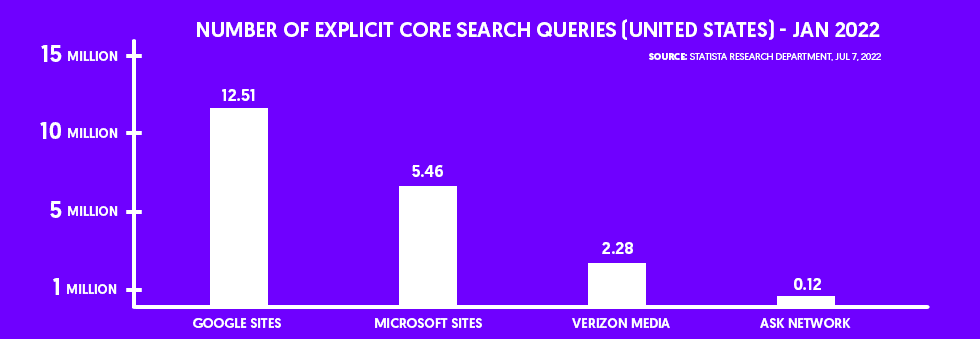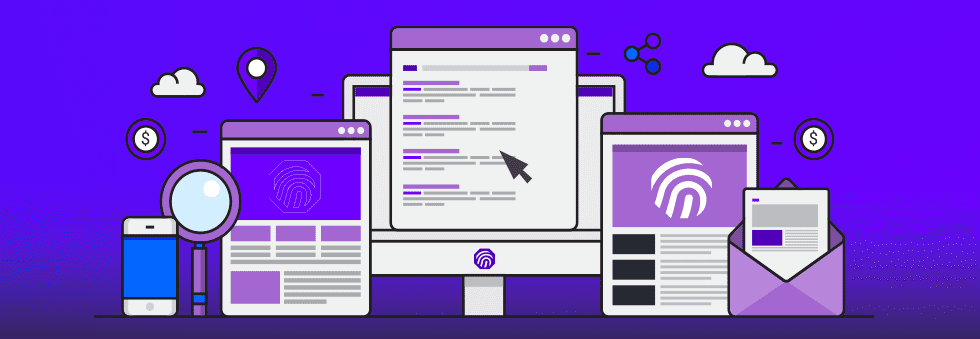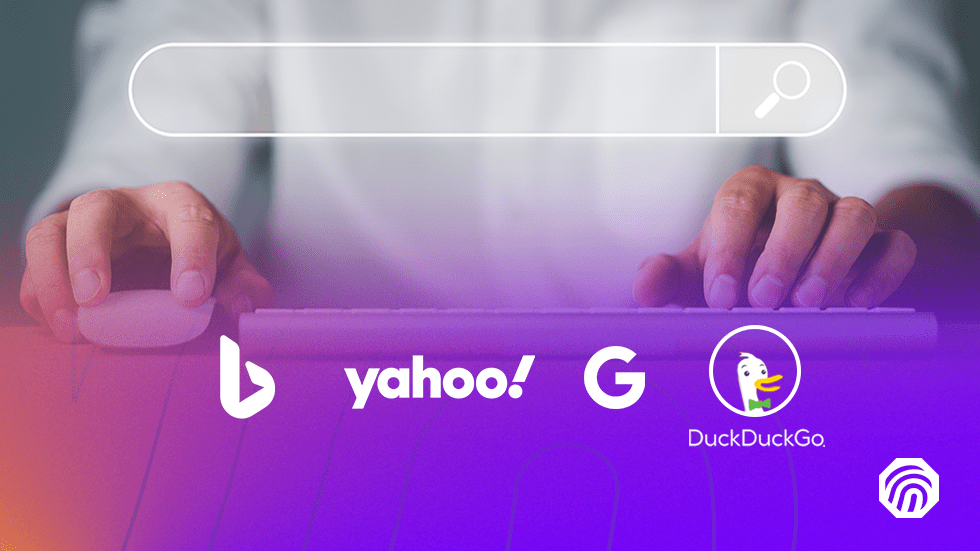When you think of a search engine, you probably think of Google. It’s the most popular search engine globally for both mobile and desktop. It’s even become a verb: “googling” a topic is synonymous with searching online for information. Notably, we never “Bing” or “Yahoo” information. These search engines haven’t made their way into our vernacular because they objectively aren’t used as much as Google.
That’s not to say brands can’t benefit from being visible on other search engines. There are benefits to pursuing paid advertising and other marketing strategies on search engines besides Google. We’ve compiled search engine analytics to help you identify which platforms can get more eyes on your business.
Market Share
Google is miles ahead of every other search engine for mobile and desktop searches. As of July 2022, they hold 84% of the market share for desktop searches. In mobile searches, they have a whopping 94% of the market share.

In 2019, Google recognized how smartphones changed the way we use search engines and transitioned to a mobile-first mindset. Their mobile-only search index became the primary index, meaning that mobile users get better filtered, more pertinent searches. And since 94% of people in the U.S. with smartphones search for information on their phones, a mobile-first approach cemented Google’s lead in search engine popularity.
Google’s focus on mobile helps account for the more significant amount of desktop search engine diversity. Bing and Yahoo collectively account for 11% of desktop search traffic. A small number of users are also turning to a platform that emphasizes privacy called DuckDuckGo. Because they never collect personal data, they show ads based on the search results page. Paid ads on this platform are not targeted and are reaching users that are not as likely to convert. But with DuckDuckGo holding just 1% of the market share, most of your potential customers can still be reached with targeted paid media.
Search Volume
The top three platforms host millions of searches every day. Google, again, holds the overwhelming majority with Microsoft Sites and Verizon Media (OneSearch) trailing behind them. Here’s how they stack up as of January 2022.

Marketing Viability
Paid advertising is one of the digital marketer’s most reliable tools. In fact, 68% of marketers describe paid advertising as “very important” or “extremely important” to their marketing efforts. The data suggests that not only are potential customers more receptive to digital paid advertisements but they’re also easier for marketers to implement at scale.
Unsurprisingly, Google and its stack of advertising tools performed the best in terms of search advertising. For Q1 of 2022 Google Search reported revenue of $39.6 billion. Marketers’ confidence in Google is supported by consistently strong results. In 2020, the company Purple used Google Ads audience targeting via YouTube and consequently saw a 34.6% boost in brand consideration. Additionally, Google Maps searches for queries with “near me” phrasing were up 100%. This indicates that syncing Google Maps and Google Business Profile for a one-stop-shop method has paid off in a big way for both local businesses and large chains. Google Business Profile does a lot more than just supplement Maps – more on that here.

The most popular optimization tactics in use by marketers today involve fine-tuning ad placements and audience targeting, both of which depend on collecting data from users. By now we all recognize pop-ups prompting us to allow cookies that track our activity on a website. Opting out of extraneous cookies is as far as the majority of users will go to avoid seeing extra advertisements. As of 2020, only 41% of desktop users enabled adblockers, a decrease from 2016’s 52% of users with adblockers.
Microsoft Advertising offers its own planning tools to access audience and marketplace data. They have PPC advertising placements on Bing, Yahoo, and DuckDuckGo. Microsoft search network audience members spend about 26% more when online shopping from their desktop computers. That’s not an insignificant number. It could be worthwhile to put more time into a platform with less overall traffic but more buying power as a supplemental option.
ThumbStopper

In 2022, Google remains the top platform in every metric. Being active on Google, whether that’s running your website, creating paid ads, or managing social accounts is the best way to reach the right audience at the right time.
ThumbStopper works with the world’s most popular search engine to get your social content to your retailer network. Brands can increase their reach by speaking to the hyper-local level with their distributed content. Retailers get the opportunity to improve their social media presence with branded content simply by opting in. Combined with Google’s dependable algorithm and constantly improving Search features, ThumbStopper gets more eyes on your content.
Book a demo to learn more about what ThumbStopper can do for you.




